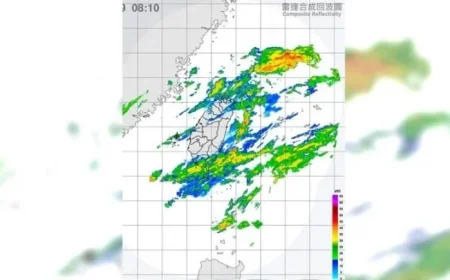Japanese space agency unveils stunning 3I/ATLAS image igniting worldwide interest in interstellar object
Recently, a social media post claimed that Japan’s space agency released an image of the interstellar comet 3I/ATLAS. This image, purportedly based on imaging and spectral data, has sparked widespread interest, although it has not been officially confirmed. The release of the image has reinvigorated global curiosity about this celestial visitor and its characteristics.
Comet 3I/ATLAS: A Brief Overview
3I/ATLAS is classified as an interstellar comet, discovered on July 1, 2025, by the ATLAS telescope system operated by NASA in Rio Hurtado, Chile. It is recognized as the third known interstellar visitor to our solar system, following 1I/ʻOumuamua in 2017 and 2I/Borisov in 2019. The designation “I” in its name signifies its interstellar nature.
Orbital Path and Movement
- 3I/ATLAS follows a hyperbolic trajectory, confirming its origin from outside the solar system.
- The comet travels at astonishing speeds of more than 210,000 kilometers per hour.
- It will not return to the Sun after its passage, highlighting its one-time visit to our solar neighborhood.
Visibility and Observation
After its closest approach to the Sun on October 30, 2025, 3I/ATLAS is becoming visible in the eastern morning sky. Astronomers expect it will be observable from early November 2025, although it may not be visible to the naked eye without a telescope.
Viewing Tips for Skywatchers
- Use a medium or large telescope for optimal viewing.
- Look towards the eastern horizon before dawn for the best chances to see 3I/ATLAS.
- Engage with local astronomy clubs for shared resources and insights.
Scientific Significance of 3I/ATLAS
The ongoing research into comet 3I/ATLAS enhances our understanding of cosmic formations. Scientists speculate that its structure may include carbon dioxide and ice formed in cold star systems.
Observing this comet presents a unique opportunity to study interstellar objects safely, as 3I/ATLAS poses no threat to Earth. NASA has clarified that it will maintain a safe distance throughout its journey.
Misconceptions about 3I/ATLAS
Recent images show 3I/ATLAS appearing green and lacking a visible tail. According to Qicheng Zhang from the Lowell Observatory, the tail is not absent; it is simply aligned behind the comet, making it difficult to see from our perspective.
For those interested, real-time tracking of 3I/ATLAS is available through NASA’s “Eyes on the Solar System” tool, which visualizes the comet’s journey through space.
Conclusion
The potential release of the 3I/ATLAS image by Japan’s space agency highlights the growing fascination with this interstellar visitor. As discussions continue and observations begin, both amateur and professional astronomers eagerly anticipate the insights this comet will provide about the universe’s mysteries.































